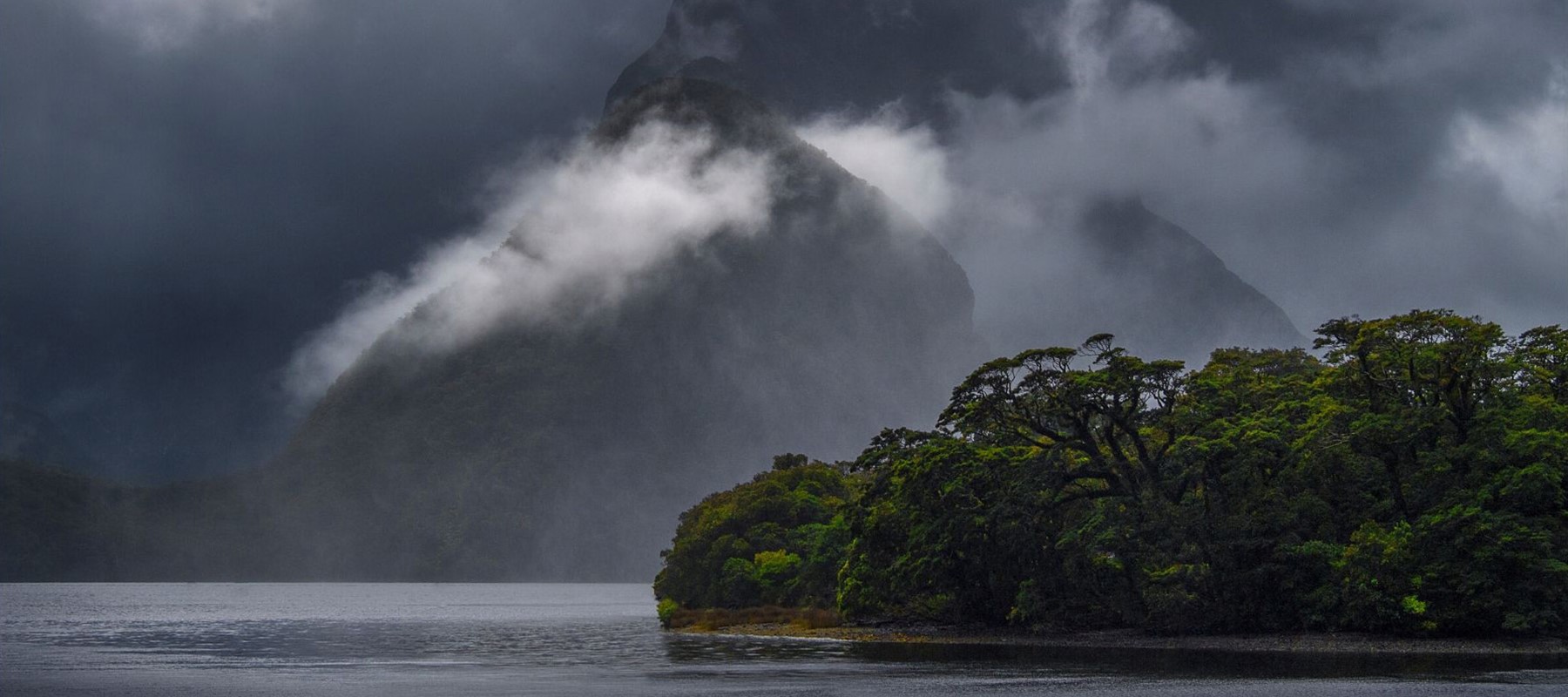History of Milford Sound

The rich history of Milford Sound
From greenstone and gold to tourism and tracks, discover why Milford Sound is famous around the world
The first hotel appeared in Milford Sound around 1890, when famed Scotsman, Donald Sutherland, and his wife Elizabeth Samuel, constructed simple lodgings for those hardy enough to visit the fiord and its walking tracks. A considerable task at the time, given there was no road access, no power and they were operating in one of the wettest places on the planet. Despite the challenges, the allure of Milford Sound was strong, and Sutherland and many trailblazers like him knew this was a destination worth making an effort for.
Milford Sound’s history is a product of it beautiful but also challenging environment. An environment that has offered Maori and European visitors natural resources of varying and sometimes fleeting richness.
THE FORMATION OF AN AWE-INSPIRING LANDSCAPE
The landscape of Fiordland has been continually changing since the beginning of time, and Milford’s geology reveals a fascinating geological history. Local rocks and fossils tell the story of a land that has—at different times—been wet and dry, warm and cold, flat and mountainous.
Fifty million years ago, this whole area was at the bottom of the sea! The land gradually buckled and shifted due to a bit of jostling between tectonic plates. Two million years ago, visitors to Milford Sound would have been standing on dry land. But it would have looked quite different to the landscape today’s visitors marvel at.
During the last ice age, this region was covered by huge glaciers, which carved out the fiords and lakes and jagged mountains as you see them today. You can see how deep the glaciers were by looking at the sheer valley walls which they sliced away. As the ice melted, it left behind lakes like this one, and the rising sea flooded in to create the fiords around the coast.
MAORI HABITATION AND EARLY EUROPEAN VISITORS
The first people to arrive in Milford Sound were the Maori, about 1,000 years ago. And they were still living in the sound when Captain Cook set up camp further south at Dusky Sound in 1773. He stayed for five weeks, ate seals and birds and made friends with local Maori families, even welcoming them aboard and showing them the ship’s cat.
One of the sailors on Cook’s ship remembered the abundance of seals and returned in 1791 to hunt them. Within a year a sealing colony had been set up on the coast along with New Zealand’s first colonial building. The slaughter of fur seals began in earnest and didn’t end until the industry began to fail 30 years later, because there were no seals left. In 1829 sealers were replaced by whalers with a like-minded attitude to the natural resource they were hunting. Like the seals, whales were hunted until the resource was exhausted.
Fiordland fell quiet for a time after that, as the Europeans concentrated on other areas. The Maori disappeared too, due to the outbreak of war between the two main tribal groups. The scattered survivors became known as the ‘lost tribe’, and the only trace of them that anyone ever saw was the odd smoking fire or fresh footprint.
THE HERMIT OF MILFORD SOUND
In 1877 a mysterious man came to live at Milford Sound. Donald Sutherland was born in Scotland and made a living as a soldier, first in Italy and finally in New Zealand. He had visited Milford a few years before on a sealing expedition and said that if he were ever to settle anywhere it would be there. And so when he was done with fighting, he bought a little boat and a dog called John O’Groats and sailed into the wilderness.
Sutherland spent 40 years at Milford Sound. An energetic explorer of the area, Sutherland got to know Milford and Fiordland, right up through the surrounding mountains. He probably knew the area better than anyone.
He was a solitary character and once spent two whole years alone in the wilderness with only his dog for company. Not surprisingly, he became known as the Hermit of Milford Sound. But his peace was shattered as the area became a tourist attraction, and myriad steamboats, painters and trampers started turning up.
In 1890 he became the fourth husband of a serial widow called Elizabeth Samuel, and together they built a hotel on Milford Sound and played host to the weary travellers. Elizabeth became known as the Mother of Milford, and Sutherland himself entertained guests with tall tales of sea monsters and hidden valleys full of rubies and diamonds.
A SHORT-LIVED GOLD RUSH
Another group of people settled in Fiordland for a short time. The area was home to about 200 gold prospectors. They all rushed here in 1886 after someone struck gold, but as it turned out there wasn’t much of it, and within a year there were only half a dozen gold miners left.
People started looking for some other way to strike it rich. They tried mining quartz, but it wasn’t very good quality. They found oil, but couldn’t extract it because the rock was all wrong. They quarried marble for a while, as well as mica, greenstone and asbestos, but those all eventually failed too.
In the end, someone realised the answer was staring them in the face. If there was one thing Fiordland had plenty of, it was trees! The timber industry survived well into the twentieth century, stopping as tourism took hold.
